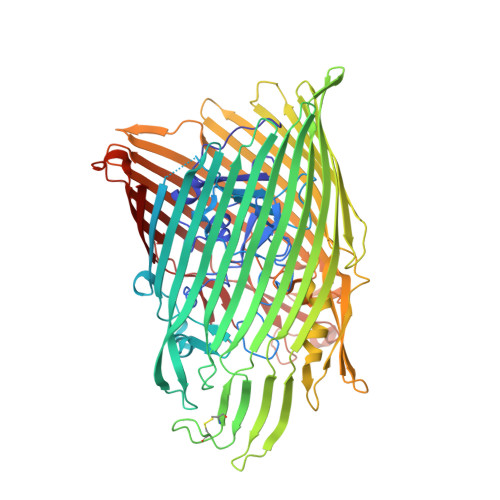Protease-associated import systems are widespread in Gram-negative bacteria.
Grinter, R., Leung, P.M., Wijeyewickrema, L.C., Littler, D., Beckham, S., Pike, R.N., Walker, D., Greening, C., Lithgow, T.(2019) PLoS Genet 15: e1008435-e1008435
- PubMed: 31613892
- DOI: https://doi.org/10.1371/journal.pgen.1008435
- Primary Citation of Related Structures:
6OFR, 6OFS, 6OFT - PubMed Abstract:
Bacteria have evolved sophisticated uptake machineries in order to obtain the nutrients required for growth. Gram-negative plant pathogens of the genus Pectobacterium obtain iron from the protein ferredoxin, which is produced by their plant hosts. This iron-piracy is mediated by the ferredoxin uptake system (Fus), a gene cluster encoding proteins that transport ferredoxin into the bacterial cell and process it proteolytically. In this work we show that gene clusters related to the Fus are widespread in bacterial species. Through structural and biochemical characterisation of the distantly related Fus homologues YddB and PqqL from Escherichia coli, we show that these proteins are analogous to components of the Fus from Pectobacterium. The membrane protein YddB shares common structural features with the outer membrane ferredoxin transporter FusA, including a large extracellular substrate binding site. PqqL is an active protease with an analogous periplasmic localisation and iron-dependent expression to the ferredoxin processing protease FusC. Structural analysis demonstrates that PqqL and FusC share specific features that distinguish them from other members of the M16 protease family. Taken together, these data provide evidence that protease associated import systems analogous to the Fus are widespread in Gram-negative bacteria.
- School of Biological Sciences, Monash University, Clayton, Victoria, Australia.
Organizational Affiliation:


















